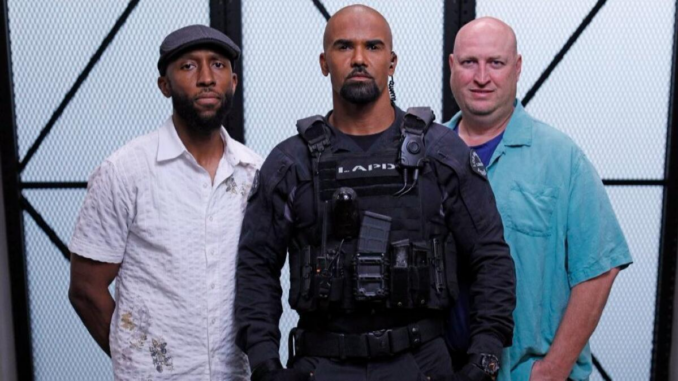
In the realm of television, few reboots have sparked as much conversation as CBS’s S.W.A.T. series. Spearheaded by Aaron Rahsaan Thomas, this modern iteration delves deep into the complexities of community and law enforcement, offering a narrative that resonates with contemporary societal issues. Thomas’s vision was clear: to create a show that not only entertains but also fosters understanding and dialogue about race, identity, and justice.
The Genesis of a Visionary Idea
Drawing from Personal Experience
Aaron Thomas’s inspiration for S.W.A.T. stemmed from his own upbringing in Kansas City, Kansas. He recalls a neighborhood where the relationship with police officers was multifaceted—marked by both admiration and mistrust. This duality was embodied by a local officer who taught neighborhood children how to ride bikes, juxtaposed against the tragic story of a young Black boy killed by police under suspicious circumstances. These contrasting experiences ignited Thomas’s desire to portray a character who navigates both worlds, embodying the complexities of identity and duty.
Redefining the Lead Character
Hondo Harrelson – A Multifaceted Protagonist
In the reboot, Daniel “Hondo” Harrelson, portrayed by Shemar Moore, stands as a beacon of nuanced storytelling. Unlike traditional portrayals of law enforcement, Hondo is a Black man leading a predominantly white SWAT team in Los Angeles. His character bridges the gap between the community and the police force, challenging stereotypes and offering a fresh perspective on leadership and justice.
Commitment to Authentic Representation
A Diverse Creative Team
Thomas ensured that the show’s authenticity extended beyond the screen. The writing and directing team comprises women and people of color, reflecting the diverse tapestry of Los Angeles. This inclusivity enriches the storytelling, providing multiple viewpoints and fostering a more comprehensive narrative.

Addressing Societal Issues Through Storytelling
Navigating the Black Lives Matter Movement
The series doesn’t shy away from addressing pressing societal issues. Episodes delve into themes surrounding the Black Lives Matter movement, police-community relations, and systemic inequalities. By intertwining these themes with action-packed sequences, S.W.A.T. sparks critical conversations while maintaining its entertainment value.
Expanding the Narrative Landscape
Showcasing Los Angeles’s Diversity
Beyond the central storyline, S.W.A.T. ventures into various neighborhoods of Los Angeles, from Boyle Heights to Filipinotown. Each episode highlights different cultural communities, offering viewers a broader understanding of the city’s rich diversity.
The Impact of Representation
Challenging Traditional Tropes
By placing a Black officer at the helm, S.W.A.T. challenges the conventional white male hero archetype prevalent in many police procedurals. This shift not only diversifies the narrative but also provides a platform for underrepresented voices in mainstream media.
Behind the Scenes: A Unified Vision
Collaboration with Industry Veterans
Collaborating with seasoned professionals like Shawn Ryan, known for The Shield, and Neal Moritz, producer of the 2003 S.W.A.T. film, Thomas brought his vision to life. Their combined expertise ensured that the reboot stayed true to its roots while embracing contemporary issues.
The Road Ahead
Continuing the Conversation
As the series progresses, Thomas aims to delve deeper into the complexities of identity, justice, and community. By maintaining a commitment to authentic storytelling and diverse representation, S.W.A.T. aspires to be more than just a television show—it seeks to be a catalyst for meaningful dialogue and change.
Conclusion
Aaron Rahsaan Thomas’s reboot of S.W.A.T. stands as a testament to the power of inclusive storytelling. By intertwining action with social commentary, the series not only entertains but also educates and inspires. Through characters like Hondo Harrelson and a diverse creative team, S.W.A.T. paves the way for a more inclusive and representative future in television.
FAQs
Q1: What inspired Aaron Rahsaan Thomas to create the S.W.A.T. reboot?
Thomas was inspired by his personal experiences growing up in Kansas City, Kansas, where he witnessed both positive and negative interactions between the community and law enforcement. He aimed to portray a character who navigates these complexities authentically.
Q2: How does S.W.A.T. address the Black Lives Matter movement?
The series integrates themes related to the Black Lives Matter movement by exploring the challenges faced by communities of color and the police force. It aims to foster dialogue and understanding through its storytelling.
